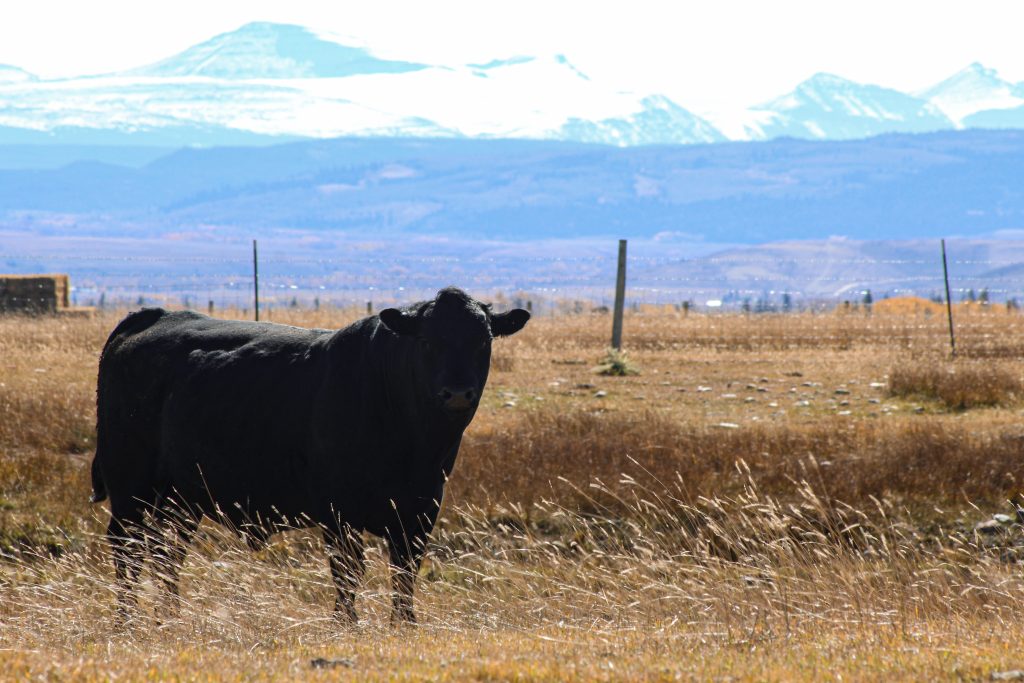Rest & Recovery

Producers should place priority on bull health after breeding season
With fall in full swing, many herd bulls are back on the ranch after spending a few months chasing cows on summer pasture.
Those few months are the most important and physically taxing on bulls during the course of the year, and in order to ensure breeding sires continue to perform to the best of their ability, it is important for producers to place an emphasis on proper nutrition and care after the breeding season.
According to an Aug. 11, 2020 article written by Ontario Ministry of Agriculture, Food and Rural Affairs Beef Cattle Specialist James Byrne, bulls can lose between 100 to 200 pounds and a few body condition scores over the course of the breeding season.
“It’s completely understandable after this level of exertion, post-breeding recovery can take between four to eight months,” states Byrne. “A good recovery period is essential for bulls to be fit and ready for next year’s breeding season.”
Post-breeding nutrition
In an Iowa State University (ISU) Extension and Outreach article published on Oct. 6, Iowa Beef Center Research Scientist Garland Dahlke notes post-breeding nutrition is dependent on the age of bulls and the amount of weight they lost during the breeding season.
Dahlke and Byrne agree mature bulls in fair condition will typically recover any weight lost on a simple, all-roughage diet without supplementation through the winter.
“Hay quality should have around eight to 10 percent crude protein and be fed at two percent of body weight,” states Dahlke.
Since young bulls are still growing, their nutrient requirements post-breeding are much higher.
Both experts explain rations for young bulls should be formulated to gain one-half pound to two and a half pounds per day, based on age, size and desired weight gain. Operations with fall- and spring-calving herds should shoot for the higher end of this range.
“Young bulls typically lose 50 to 200 pounds during their first breeding season, so prioritizing protein and energy in their diet will promote growth and subsequent reproductive health,” says Dahlke.
“Young bulls fed three to six pounds of grain in the winter, roughage of two percent body weight and a total diet protein content of 10 to 11 percent will often reach the target rate of gain,” he adds.
Soundness and stamina
Since post-breeding nutrition may look different for bulls of different ages and body condition, producers may consider sorting them into separate production groups throughout winter months.
While doing this, Byrne reminds producers bulls need adequate space – especially those kept indoors or in a drylot – so they can maintain stamina and sound feet and legs.
“Daily exercise is necessary so bulls have built up the stamina to put in the distance required during the next breeding season,” he says. “Simply placing water and feed at opposite sides of the barn or corral will force bulls to walk between stations, thereby getting necessary daily exercise.”
Byrne also cautions producers to slowly introduce bulls when putting them together after breeding season to avoid fighting and injury.
Conducting a health evaluation
In addition to ensuring adequate post-breeding nutrition, producers should also conduct an overall health evaluation on their bull battery.
In the aforementioned ISU Extension article, ISU Extension Beef Specialist and Veterinarian Dr. Chris Clark notes post-breeding is a good time to vaccinate bulls and treat for parasites.
“Efficacy of external parasite control has often waned by the end of breeding season and bulls may have picked up internal parasites while grazing, so it may be beneficial to apply some kind of antiparasitic treatment,” he says.
“It may also be worthwhile to test for things like trichomonas,” Clark concludes. “In a relatively closed herd, this probably isn’t a big concern, but if bulls have had contact with neighboring herds or if new open cows were added to the herd prior to or during breeding season, testing is wise.”
Hannah Bugas is the managing editor of the Wyoming Livestock Roundup. Send comments on this article to roundup@wylr.net.





